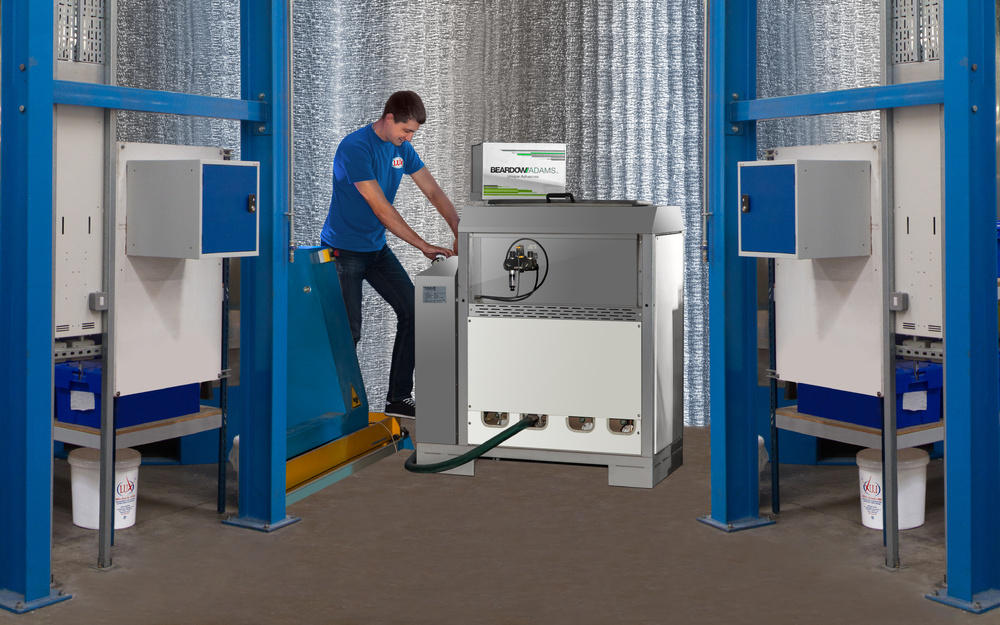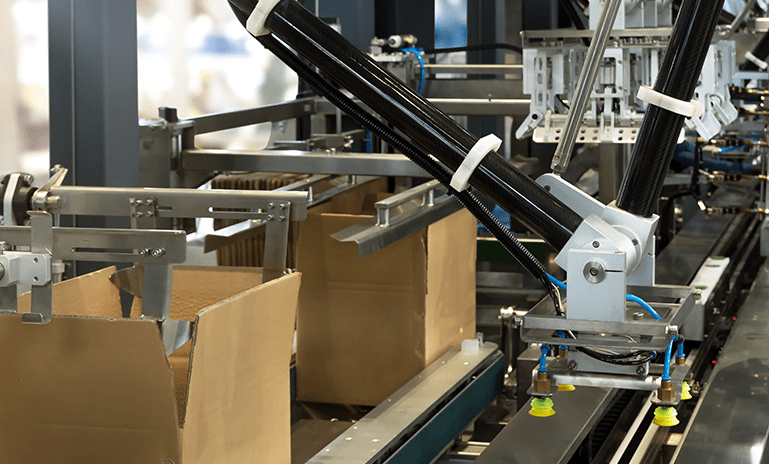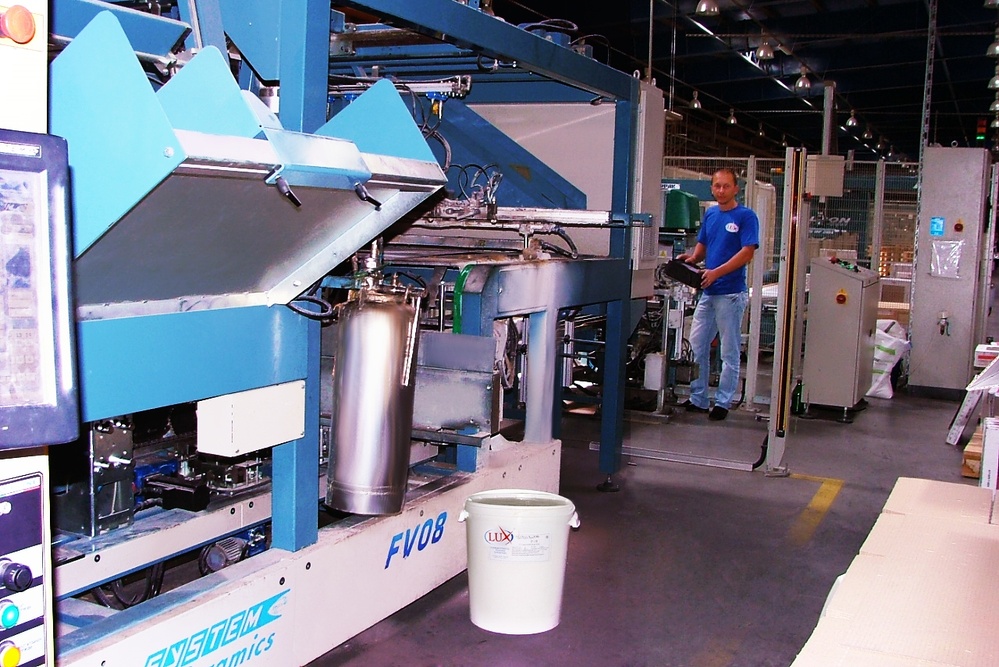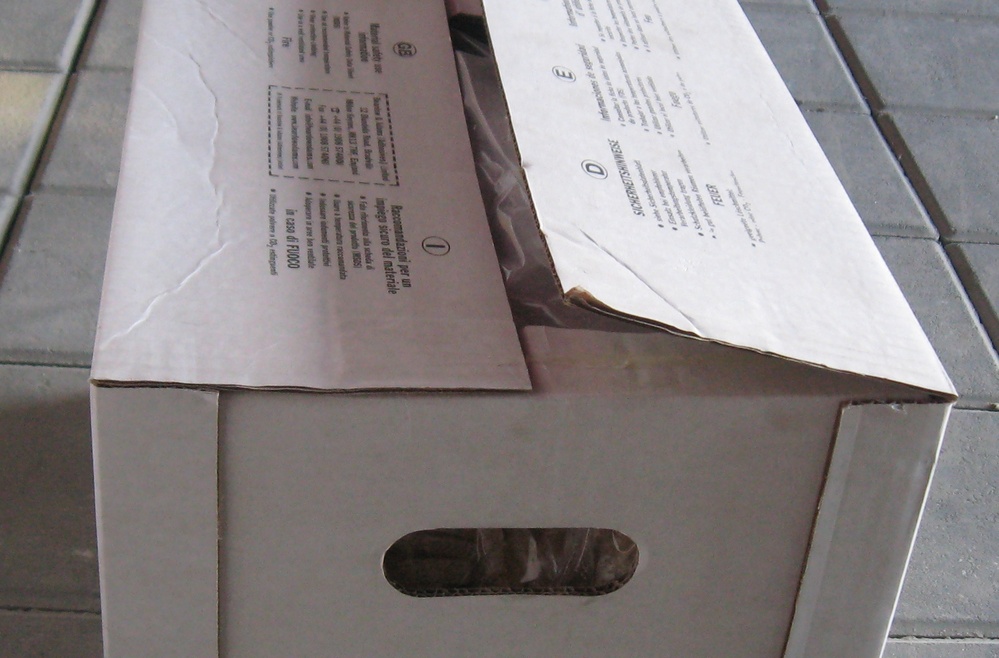Recommended operating temperature of the adhesive
- Hot-melt adhesive's recommended operating temperature
- Precautions when applying hot-melt adhesive
- Operating temperature of water-based adhesive
- Four reasons why the right adhesive temperature is crucial
- Do you have any further questions about the temperature of the adhesive you apply?
If you want to get the most out of your adhesive, you should pay special attention to its recommended operating temperature. You will be surprised to find out how many problems with the application and equipment you may avoid merely by proper adjustment of the adhesive's temperature.
Let's talk about the recommended operating temperature for two main types of products: hot-melt adhesive and water-based dispersion adhesive.

Hot-melt adhesive's recommended operating temperature
Based on polymers, hot-melt adhesives consist of 100 percent solids that do not contain solvents or water. Being thermoplastic, they remain solid at room temperature, but get liquefied when heated. The absence of water and solvents allows hot-melt adhesives to quickly reach the ultimate bonding strength. The mechanical bonds they create penetrate into the surface to be bonded before hardening upon cooling.
Information about the recommended temperature of the adhesive's application is provided in the Technical Data Sheet (TDS). Be sure to request it from the customer service manager.
The recommended operating temperature for most standard hot-melt adhesives is 170°C. Having set another temperature, you may face problems such as snapping off of the bonded materials, the adhesive's gelling, charring or excessive tension. There are thousands of different types of hot-melt adhesives on the market, including low-temperature adhesives. The melting points of adhesives vary depending on the criteria and characteristics, application processes and projects in which they are used.
It is necessary to choose the proper adhesive for a specific application. Knowing the type of the adhesive and the temperature at which it melts is the most important thing to start your production.

High-temperature hot-melt adhesive. For a high-temperature adhesive, the temperature of about 190-220°C is required to create strong bonding of parts and provide a long service life of the product. Wood, metal or thick cardboard are designed to withstand a considerable thermal load, and require the application of a high-temperature hot-melt adhesive. If you use low-temperature adhesives for these materials, you will hardly get the same good result.
Low-temperature hot-melt adhesive may be applied at a temperature of about 120–160° C. It has a short operating time, for it hardens quickly. The surface bonds created by low-temperature hot-melt adhesives are relatively lower than those of high-temperature adhesives. Due to the low temperature of melting, such adhesives can be used for gluing heat-sensitive materials, arts and crafts objects, paper handicrafts, etc. Both types of adhesive have different operating criteria and requirements.
Recommendations for troubleshooting related to improper application of hot-melt adhesive are presented in detail on the Recommendations page, the article "Possible problems with hot-melt adhesive bonding".

Precautions when applying hot-melt adhesive
Hot-melt adhesive is used for gluing complex surfaces, such as plastic, acrylic, polypropylene and many other materials.
The product is applied at high operating temperatures, which may pose a risk of severe burns if the necessary precautions are not followed. The high content of vapours released when the adhesive gets heated may cause eye and respiratory tract irritation. Overheating of the adhesive, especially on an open fire, may cause its combustion. Excessive evaporation speaks for overheating. If you happen to inhale a large amount of vapours of a hot product, be sure to get some fresh air as soon as possible. Take measures against any irritation symptomatically and consult a doctor if necessary.
Low-temperature hot-melt adhesives are safer and easier to use due to a lower risk of getting burnt.
Operating temperature of water-based adhesive
As a rule, water-based adhesives are eco-friendly and non-toxic. They are applied in various areas such as the sealing of crates and boxes, the production of packaging, woodworking, labelling, lamination, book production and other assembly operations.
One of the significant advantages of using water-based adhesives is that they need no heating and can be applied at room temperature, which makes them absolutely safe to handle. The temperature of the dispersion adhesives' application ranges from 15 to 35°C. The most appropriate temperature of application is for the consumer to decide on. Store the adhesive in tightly closed containers in dry storage rooms at a temperature ranging from 5 to 30°C.
Read the troubleshooting guide for working with water-based adhesive.

Four reasons why the right adhesive temperature is crucial
1. Snapping off. When you glue the parts together and the bends and joints do not stick properly, "snapping off" or "opening up" occurs. It may become annoying and costly, especially if you have to involve extra workers to stand at the end of the production line to reduce the number of defective products. The application of the adhesive being too cold is one of the reasons why bonded parts may snap off. If the adhesive does not reach the necessary temperature, it sets faster than required, with its exposure time decreasing. Thus, by the time pressure is exerted on the bend at the gluing point, the adhesive will already begin to dry out, and it will result in insufficient quality of adhesion. Besides, the improper bonding between the glued parts in the production process can occur for a number of other reasons: a change in the quality of the materials being glued, ambient temperature or humidity, improper pressure.

2. Adhesive's charring. Too high temperature may cause combustion of the adhesive. The charred adhesive is obviously unsuitable for further use and application on the equipment. If the adhesive is applied at too high temperature, the properties of its formula will change, with its performance deteriorating. Charred adhesive has different properties and may damage the equipment. Make sure that the temperature of the adhesive is not too high to avoid its burning.
3. Different setting times. The time required for bonding will vary greatly depending on the temperature of the adhesive. When working with the recommended adhesive's temperature, the setting time must exactly match the speed of the equipment's operation. The speed of the equipment's operation is crucial in the selection of proper adhesive. If the adhesive is too cold, the setting speed will be faster than required, and there may be problems with adhesion. If the adhesive is too hot, the setting speed may be slower than required, which may result in the need to sand the surfaces to be bonded.
4. Hard-to-clean equipment. This problem may occur if the adhesive is too cold. The adhesive will be accumulating on your equipment, and your team will have to stop production to clean up the gluing machine.
Do you have any further questions about the temperature of the adhesive you apply?
Be sure to always check the recommended operating temperature in the Technical Data Sheet (TDS) of the product you are using. If you have any doubts or do not know how to apply your adhesive to get the best possible result, please contact us by email office@lux-x.com or by calling one of the phone numbers listed in the Contact Us page






